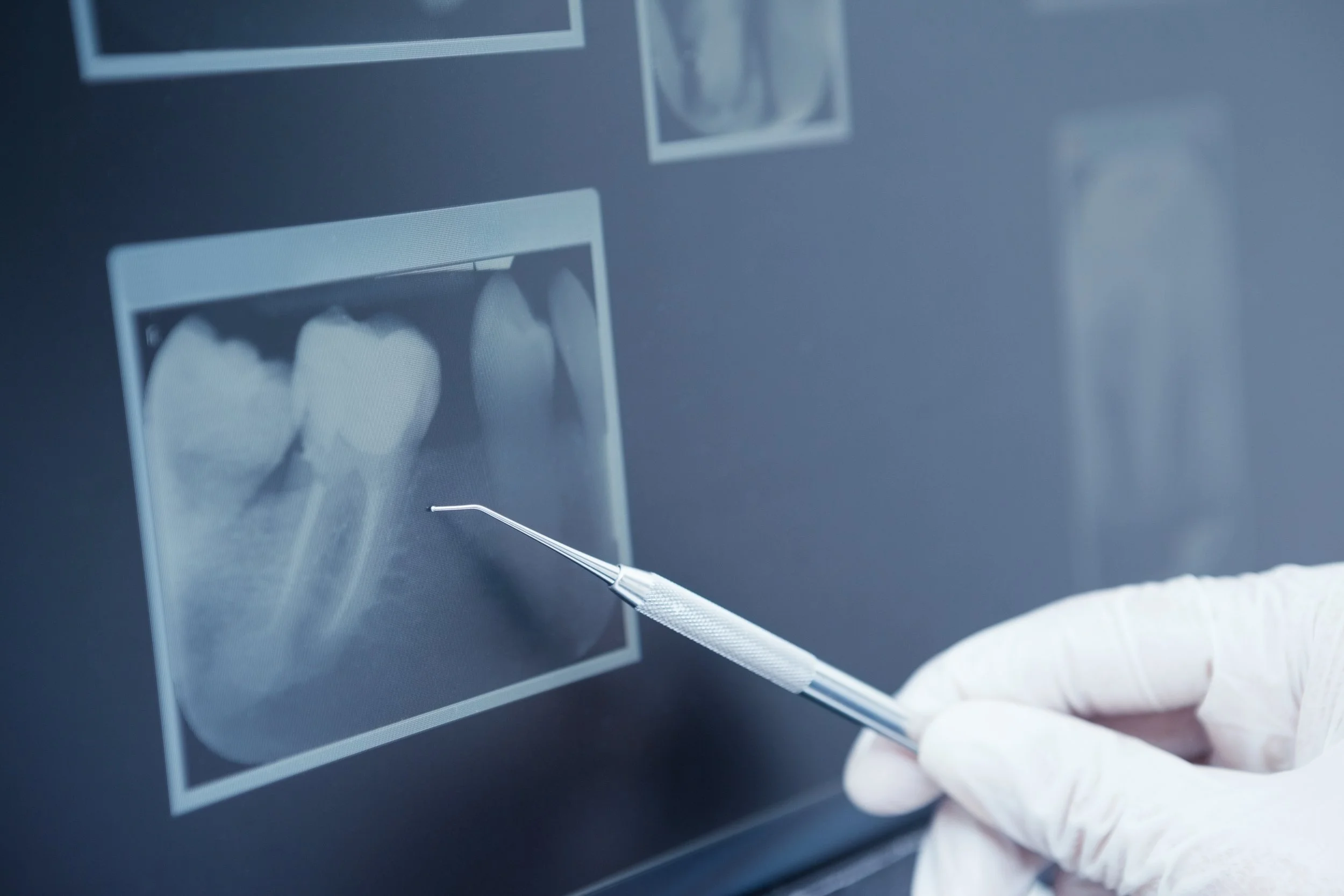Dental X-rays:
A Critical Tool for Comprehensive Oral Care
At Northgate Station Dental, we utilize the latest advancements in dental technology to provide our patients with the most accurate and effective care. Dental X-rays are essential for diagnosing potential dental issues that may not be visible during routine exams. We offer both 2D digital X-rays and 3D Cone Beam Computed Tomography (CBCT) to give us detailed insights into your oral health, helping us create precise treatment plans for a variety of dental needs.
What Are Dental X-rays?
Dental X-rays, also known as radiographs, are diagnostic images that allow us to see the structures beneath the surface of your teeth, gums, and jaw. X-rays are crucial for identifying issues that may not be visible to the naked eye, such as tooth decay, infections, bone loss, or impacted teeth. With advancements in digital technology, both 2D and 3D CBCT X-rays provide us with comprehensive views of your oral anatomy.
3D CBCT X-rays: Advanced Imaging for Complex Cases
For more complex cases, 3D Cone Beam Computed Tomography (CBCT) offers a more detailed and comprehensive view of your oral structures. Unlike 2D X-rays, 3D CBCT scans provide a three-dimensional image that shows not only your teeth but also your jawbone, soft tissues, and nerves. This allows for a more accurate diagnosis and treatment planning, particularly for surgical procedures and advanced dental conditions.
Benefits of 3D CBCT X-rays:
-
CBCT scans offer a 360-degree, high-resolution view of your entire oral anatomy, which is essential for accurate diagnosis and treatment planning.
-
3D scans are invaluable for procedures like dental implants, root canal therapy, and orthodontics, as they allow for precise measurements and assessments.
-
Enhanced Diagnosis: CBCT scans can reveal issues that might be missed on 2D X-rays, such as hidden infections, complex bone structures, or abnormalities in the jaw or sinuses.
2D X-rays: Standard for Routine Dental Care
2D digital X-rays are the traditional form of X-ray imaging used in dentistry. These images capture a two-dimensional view of your teeth, bones, and surrounding structures, offering an excellent overview of your oral health. 2D X-rays are typically used for routine check-ups and diagnosing common dental problems, such as cavities, gum disease, and infections.
FAQs
-
Both 2D and 3D CBCT X-rays are valuable tools in dental care, but they serve different purposes based on the complexity of the case:
Feature2D Digital X-rays3D CBCT X-raysImage TypeTwo-dimensional images of teeth and bonesThree-dimensional, full-structure imagesUseRoutine check-ups and basic diagnosticsComplex cases, surgery planning, implantsDetail LevelLimited detail of teeth and surrounding boneHigh-resolution, detailed view of teeth, bones, nerves, and tissuesTimeQuick, completed in secondsSlightly longer, but still quick and non-invasiveRadiation ExposureLow, especially with digital technologySlightly higher than 2D X-rays but minimized with modern CBCT technology
-
While 2D X-rays are ideal for regular check-ups and diagnosing common dental issues, 3D CBCT X-rays are particularly beneficial for:
Dental Implants: 3D scans allow for precise implant placement by showing the exact location of nerves, bone density, and sinus cavities.
Orthodontics: 3D imaging helps create detailed orthodontic treatment plans by providing a full view of the teeth, jaw, and surrounding structures.
Root Canal Therapy: For complex root canal procedures, 3D X-rays give an accurate view of the tooth’s root structure and surrounding tissue.
Jawbone and Sinus Assessment: 3D CBCT scans can detect issues such as bone loss, jaw abnormalities, or sinus complications that may not be visible on 2D X-rays.
-
Yes, dental X-rays are safe, and we take extra precautions to minimize radiation exposure. With digital technology, both 2D and 3D X-rays emit much lower radiation levels compared to traditional film X-rays. Additionally, we provide protective lead aprons and thyroid collars to further safeguard your health.
-
Quick and Simple: 2D X-rays are fast and non-invasive, making them ideal for routine dental exams.
Lower Radiation Exposure: With digital technology, 2D X-rays emit significantly less radiation compared to traditional film X-rays.
Immediate Results: Digital X-rays provide instant images, allowing your dentist to review and discuss findings with you during your visit.


